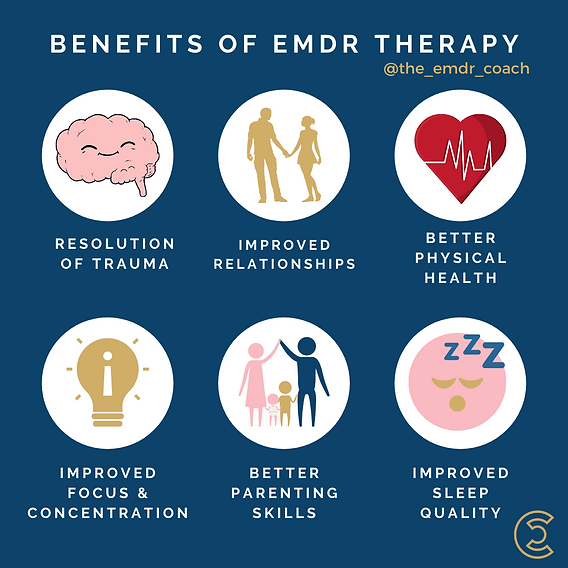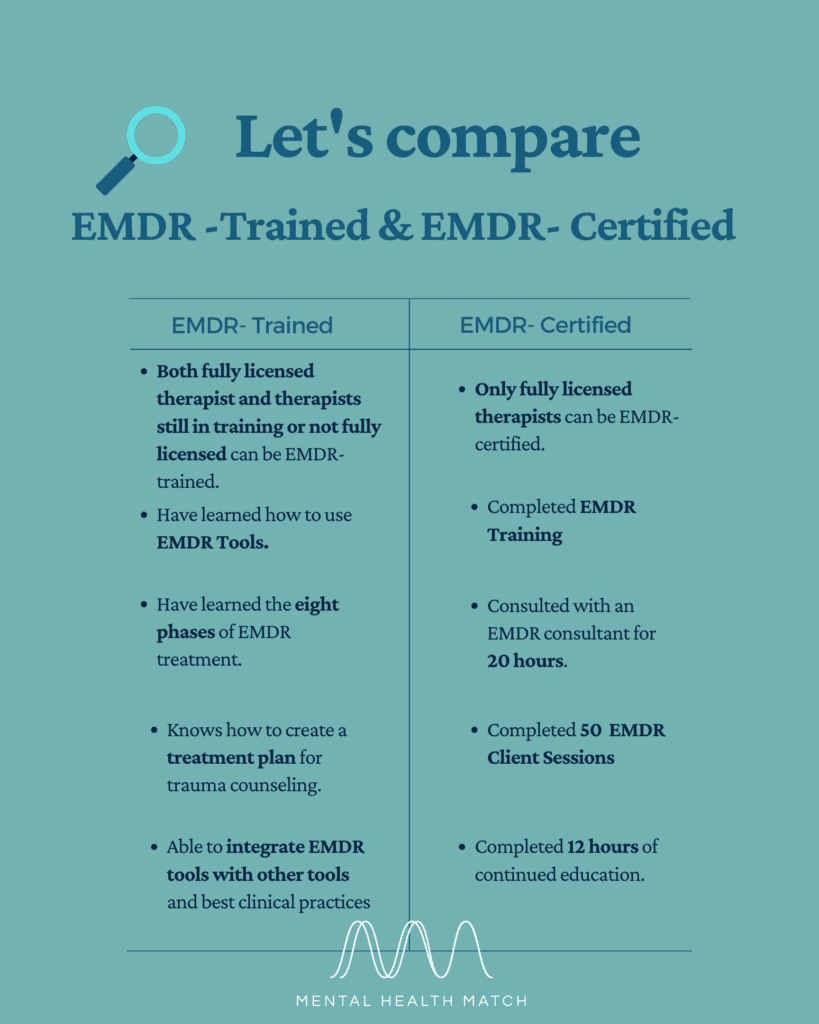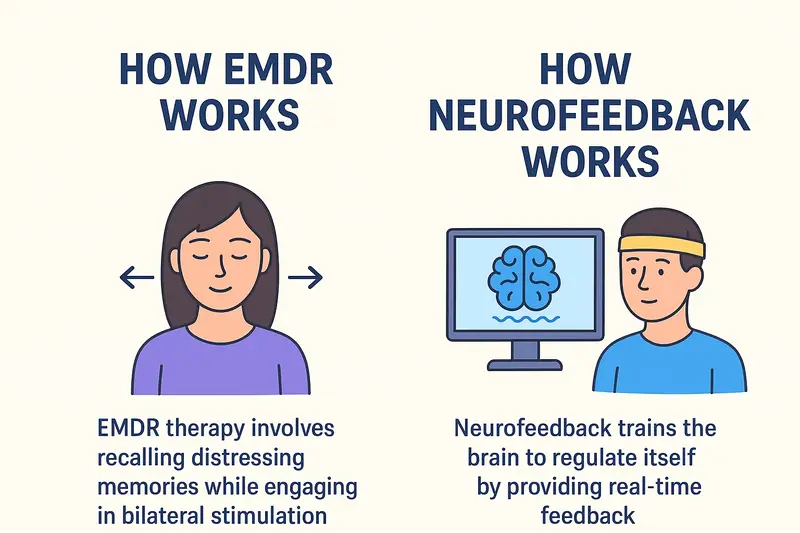Licensed emdr therapists nyc deliver direction for healing journeys
Exactly How EMDR Treatment Works: a Comprehensive Take A Look At the Refine and Its Performance
EMDR treatment has become a prominent treatment for trauma-related problems. Its organized technique includes different stages designed to promote the processing of distressing memories. Central to this technique is the idea of reciprocal stimulation, which plays a crucial role in how memories are refined. Recognizing these elements exposes much concerning the treatment's effectiveness. What especially happens throughout an EMDR session, and exactly how does it impact the healing journey?
Comprehending the Principles of EMDR Treatment
EMDR treatment, or Eye Activity Desensitization and Reprocessing, runs on the facility that unsolved traumatic experiences can impede emotional health. This cutting-edge therapeutic strategy aims to promote the handling of traumatic memories, permitting individuals to obtain a healthier perspective on their past. Central to EMDR is the principle of bilateral stimulation, usually accomplished via assisted eye motions, which is believed to assist incorporate traumatic memories into an extra adaptive framework.

The Eight Phases of EMDR Therapy
The process of EMDR therapy unfolds over 8 unique stages, each made to lead customers through a structured strategy to healing injury. The first stage includes history-taking, where the therapist evaluates the client's background and recognizes target memories. In the 2nd stage, clients learn leisure methods to take care of distress. The third phase concentrates on recognizing unfavorable beliefs connected with the terrible memory.
The 4th phase is where the desensitization process starts, enabling clients to refine the terrible memory. The fifth stage includes installing favorable beliefs to change the unfavorable ones. In the 6th phase, customers are assisted to examine their emotional and physical actions to the processed memory. The seventh phase stresses closure, assisting clients return to a state of stability. The 8th stage entails reevaluation, where therapists and clients review development and resolve any type of recurring distress. This comprehensive technique cultivates a pathway to healing and strength.
The Role of Reciprocal Excitement
Bilateral excitement is an important element of EMDR treatment, promoting the processing of distressing memories. This strategy entails alternating stimulation of both hemispheres of the brain, normally accomplished through eye activities, acoustic tones, or responsive feelings. The purpose of bilateral stimulation is to engage the brain's all-natural information processing system, which might end up being interfered with complying with trauma.
By triggering both sides of the mind, bilateral excitement helps clients accessibility and recycle traumatic memories in a more adaptive way. This technique motivates the assimilation of stressful experiences, reducing their emotional cost and making it possible for customers to create new point of views.

Furthermore, bilateral stimulation might advertise relaxation and lower anxiety during sessions, creating a safer setting for customers to face unpleasant memories. Ultimately, this method enhances the therapeutic procedure, enabling individuals to approach recovery and resolution.
Proof Supporting the Performance of EMDR
Research has shown that EMDR treatment works in dealing with different mental problems, especially trauma (PTSD) Many studies have actually shown considerable decreases in PTSD signs following EMDR treatment. A meta-analysis of randomized controlled tests discovered that EMDR was as reliable as cognitive behavioral treatment (CBT) for PTSD, with enduring effects observed also months after treatment. Furthermore, the American Psychological Organization and the World Wellness Organization support EMDR as a suggested treatment for trauma-related conditions.
Past PTSD, research shows that EMDR can likewise profit individuals dealing with anxiousness, depression, and fears. An expanding body of evidence supports its usage in diverse populations, consisting of kids and veterans - emdr therapy new york city. Generally, the building up research study emphasizes EMDR's potential as a flexible therapeutic choice, leading the means for additional expedition into its mechanisms and applications in mental health therapy
What to Anticipate Throughout an EMDR Session
Throughout an EMDR session, clients can anticipate an organized yet adaptable approach focused on handling traumatic memories. The therapist begins by establishing a secure setting, where customers can really feel comfy sharing their experiences. Initial conversations focus on determining specific memories and connected adverse beliefs.
Clients are assisted to focus anchor on these memories while at the same time taking part in bilateral excitement, typically via directed eye activities or tapping. This dual focus aims to facilitate the processing of the injury, enabling clients to reframe their experiences and decrease emotional distress.
Throughout the session, specialists keep an eye on customers' reactions, readjusting the rate and technique as needed. Sessions might include relaxation methods or cognitive restructuring to strengthen positive ideas. In general, clients can expect an encouraging environment that encourages self-exploration and healing, eventually causing a higher sense of emotional health.
Often Asked Inquiries
Is EMDR Therapy Suitable for Children or Adolescents?
EMDR therapy can be ideal for kids and teens, gave it is adapted to their developing needs (emdr therapy). Medical professionals often change methods to ensure safety and efficiency, sustaining younger populations in handling trauma and psychological distress
Just How Lengthy Does EMDR Treatment Commonly Last?
EMDR treatment commonly lasts between 8 to 12 sessions, with each session ranging from 60 to 90 minutes. Private needs and the intricacy of trauma can affect the general period of treatment.
Can EMDR Therapy Be Done Remotely or Online?
EMDR treatment can undoubtedly be carried out remotely or online. Many practitioners have actually adapted their methods to digital environments, allowing clients to participate in efficient sessions from the convenience of their homes, keeping restorative advantages.
What Are the Prospective Side Results of EMDR?
Potential side effects of EMDR treatment may include short-lived psychological distress, heightened stress and anxiety, dazzling memories, and physical discomfort. People may additionally experience exhaustion or headaches complying with sessions, as the mind processes extreme feelings and memories.
Just How Does EMDR Contrast to Conventional Talk Treatment?

EMDR treatment, or Eye Activity Desensitization and Reprocessing, operates on the premise that unsettled look at this site distressing experiences can prevent psychological wellness. The process of EMDR treatment unravels over eight distinctive stages, each designed to assist customers with a structured technique to healing trauma. Reciprocal stimulation is an important part of EMDR treatment, promoting the handling of terrible memories. Throughout an EMDR session, customers can expect an organized yet versatile strategy intended look at this website at processing traumatic memories. Prospective side effects of EMDR treatment might include short-lived psychological distress, enhanced stress and anxiety, vivid memories, and physical discomfort.